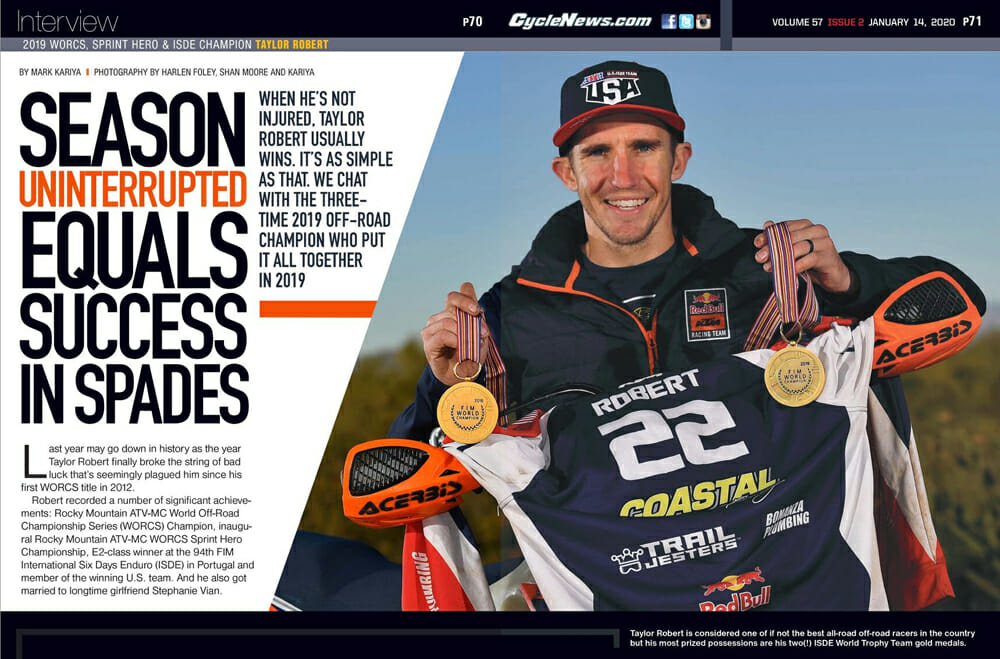Mark Kariya | January 17, 2020
Interview With Taylor Robert, 2019 WORCS, Sprint Hero & ISDE Champion
When he’s not injured, Taylor Robert usually wins. It’s as simple as that. We chat with the three-time 2019 off-road champion who put it all together in 2019.
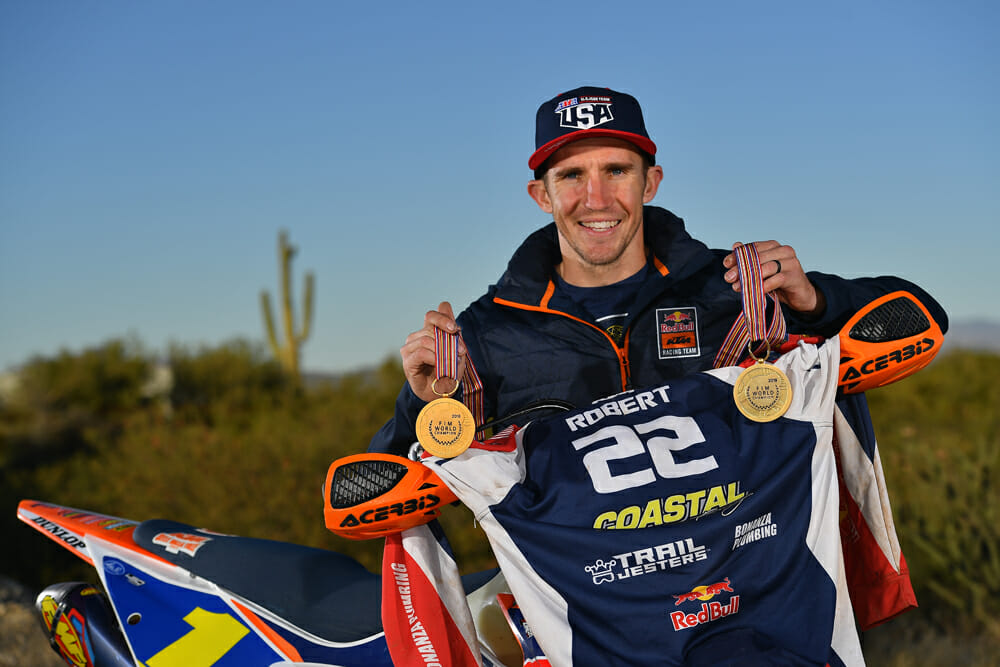 Taylor Robert is considered one of—if not the best—off-road racers in the country. But his most prized possessions are his two(!) ISDE World Trophy Team gold medals.
Taylor Robert is considered one of—if not the best—off-road racers in the country. But his most prized possessions are his two(!) ISDE World Trophy Team gold medals.
Photography by Harlen Foley, Shan Moore and Kariya
Last year may go down in history as the year Taylor Robert finally broke the string of bad luck that’s seemingly plagued him since his first WORCS title in 2012.
Robert recorded a number of significant achievements: Rocky Mountain ATV-MC World Off-Road Championship Series (WORCS) Champion, inaugural Rocky Mountain ATV-MC WORCS Sprint Hero Championship, E2-class winner at the 94th FIM International Six Days Enduro (ISDE) in Portugal and member of the winning U.S. team. And he also got married to longtime girlfriend Stephanie Vian.
Yes, 2019 was quite the year for Robert who originally started out as a motocross kid from Arizona (he’ll turn 30 this year) before making the switch to off-road racing and the WORCS circuit as part of Kawasaki’s Team Green program.
Besides motocross, WORCS and the ISDE, Robert has gained experience in a number of racing disciplines including extreme enduro/EnduroCross, hare scrambles, hare & hound and SCORE Baja. He’s raced all over the world and is universally regarded as one of the guys to beat wherever he lines up.
However, Roberts’ championship runs seemed to be perpetually interrupted, preventing him from amassing a collection of titles that one might expect from a racer who’s tried to pattern his style in the manner of smooth, flowing European legends he’s studied since his first Six Days in 2010 in Mexico.
Thus, the success he enjoyed in 2019 came almost as relief as well as joy, reaffirming to the casual observer what he and steadfast sponsors knew he was capable of. Therefore, that’s where we began our discussion when we got a chance to chat with him recently.
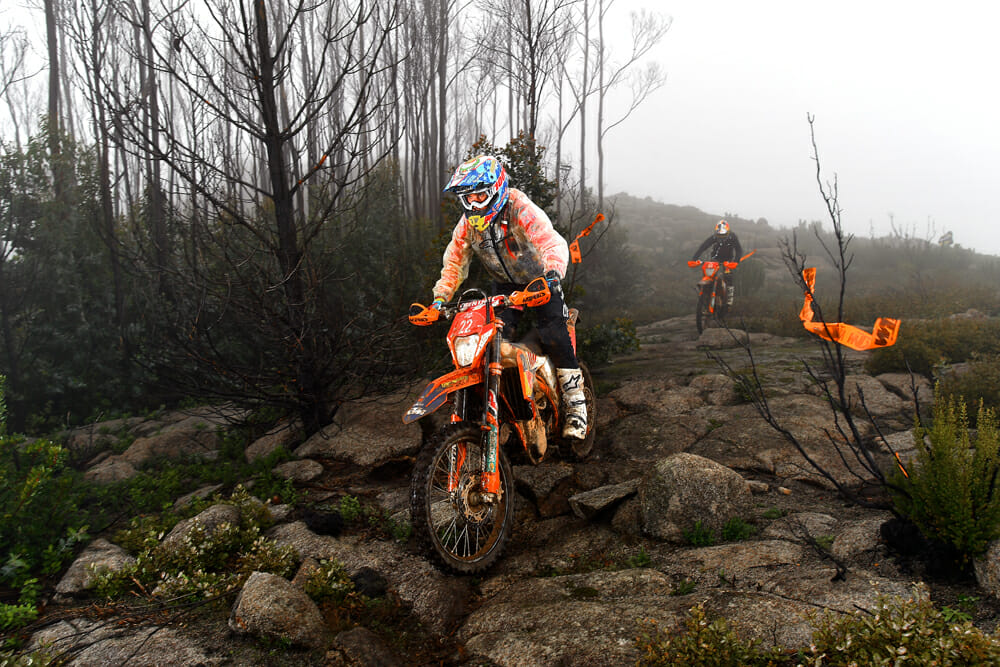 Robert is most proud of his success at the ISDE.
Robert is most proud of his success at the ISDE.
You’ve been one of the fastest guys in a number of disciplines for a number of years now, but championships seemed to elude you due to injury. That had to be frustrating, but did it lead to doubt that you’d ever reach your potential and get a championship?
Yeah, there was definitely some frustration. It’s not that I didn’t fully reach my potential as far as race results go, because I was winning a lot of races and being as fast as I thought I could be, but there was definitely some frustration there. I did win the WORCS Championship in 2012.
From there, just with a little bit of a change in the industry and focusing on different series, WORCS was kind of my bread and butter growing up. I raced motocross for a while, and I kind of transitioned into WORCS when I was 15 years old and just really took to it and started doing well.
Then I won my first championship in 2012, then Kawasaki decided they didn’t want to race it in 2013 so it was kind of unfortunate circumstances there. So I ended up signing with KTM and with KTM my main focus was supposed to be Baja and EnduroCross, which are—as you can tell—completely opposite.
But the Baja [program] got cut after Kurt [Caselli] passed away [at the 2013 season-ending Baja 1000], so I felt like two years in a row I got kind of taken out of a series that I could do really well at. I had to supplement it with other stuff, which, luckily for me, I’m a well enough rounded rider that I can kind of ride everything. I might not be winning every race like I want to, but I can do very well in a lot of different disciplines. It’s actually been really cool to try all these different series and race all these different things, similar to what Ryan Sipes has done is kind of what I’ve really been doing for the last five years.
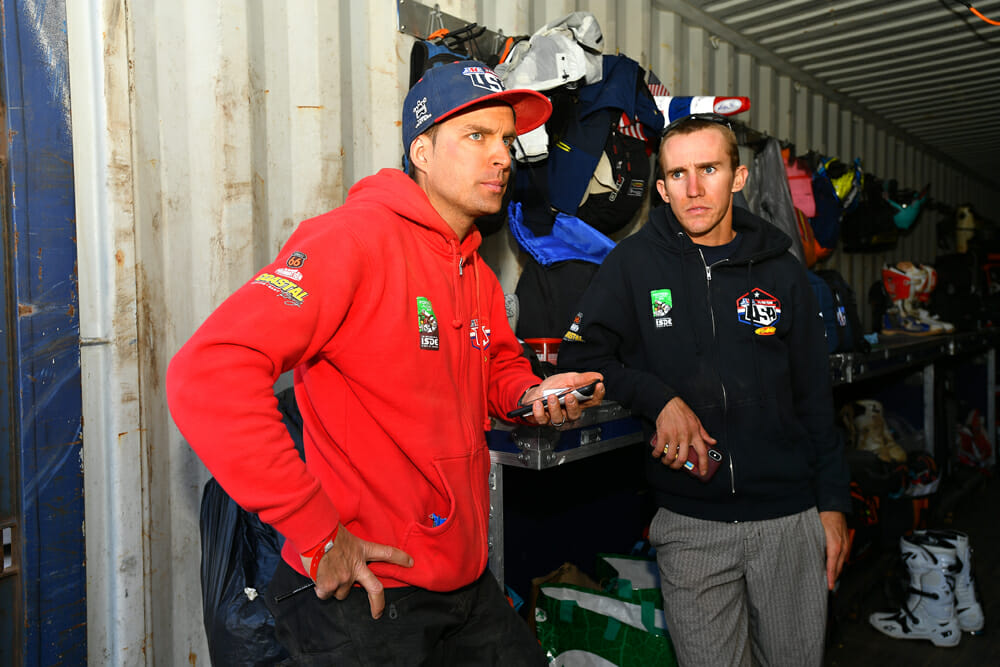 Robert (left) and team manager Antti Kallonen don’t take ISDE racing lightly.
Robert (left) and team manager Antti Kallonen don’t take ISDE racing lightly.
Finally, in 2017, KTM decided to come back and race WORCS again, which I was excited about. Unfortunately, I got hurt really bad at King of the Motos [in February 2017] and took myself out of the championship there.
But then the one that really stung was in 2018 when I got hurt at the beginning of the season because it wasn’t my fault. If I’d crashed and I’m the only one involved, then it’s all on me—it’s frustrating, but I can understand it and swallow it—but [that one] when I’d won the first few races and everything was going well, then a kid goes the wrong way on the track and breaks both my arms. It’s incredibly frustrating!
To come out [last] year and win as many races as I did and really put a stamp on what I feel I should’ve done the last three years felt pretty good.
People have short memories, especially when it comes to racing history, and they forget you’ve done a bunch of different types of racing.
In 2014, I was able to do EnduroCross, hard enduros—I did Erzberg, Sea to Sky and all the hard enduros here in the United States—and in ’15, I did [FIM] SuperEnduro [in Europe], EnduroCross and a handful of hard enduros. In ’16 I did the full, what I call the Euro tour—I did SuperEnduro and World Enduro then hare & hound and WORCS and everything.
It’s been pretty cool to get to do all these different disciplines and do well at them. I’ve won races in just about all of them, so it feels pretty good to be able to do that.
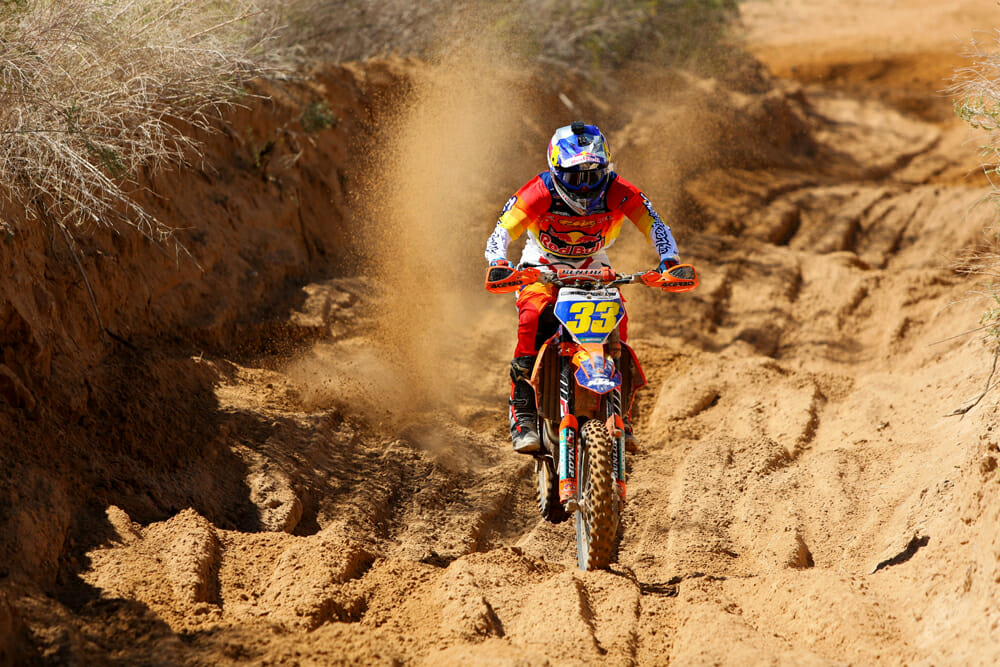 Winning WORCS races is nothing new to Robert but winning WORCS Championships have been a different story.
Winning WORCS races is nothing new to Robert but winning WORCS Championships have been a different story.
Looking at all the different types of racing you’ve done, have you developed a favorite?
Enduro racing like ISDE-style racing is probably the one I’m most passionate about and the one that I work the hardest at, just because I really like the variety and the different types of terrain and the intensity and stuff like that. But with that being said, my favorite activity is to just go out on the weekend and go with my buddies to just go ride hard enduro [trails]. I love exploring—you and a couple buddies seeing if you can make it to the top of a mountain that nobody’s ever been to the top of before. I really enjoy that!
We’ve heard that while you like racing EnduroCross, practicing for it wasn’t high on your list of fun things to do.
I love the technique side of EnduroCross, the technical aspect of it and just the chaos of it was fun at times—at other times it was frustrating. The practicing was always frustrating because you’re trying to push the limit on unforgiving obstacles so if you crash in the rock garden or in the matrix—which when you’re practicing, you’re really trying to find the limit of what you’re capable of and you end up crashing. You might not be going that fast, but going over the bars in a rock pile or logs or firewood and stuff can be pretty painful, so that was the aspect that I [didn’t] like—beating your body up week after week trying to find the limit of where those obstacles are.
Is it something you still practice?
I don’t practice EnduroCross per se. Even though I have all the obstacles in my backyard, it isn’t set up for EnduroCross anymore; I’ve kind of made it into a trials playground. Trials is definitely a huge hobby of mine slash cross-training as well. Same thing—I love the technical aspect of trials. No matter how good you are at trials, you can always do better. I love that aspect of it, especially because it’s a totally different pace. Going out for a WORCS race, you might end up doing 80, 90 miles an hour in a WORCS race. Trials, you’re never really going over five miles an hour, but it’s just as difficult.
Do you watch videos of Toni Bou (World Trials Champion) and get inspired?
Oh yeah. I watch videos of all those guys. It’s pretty cool. We have a couple guys here in Arizona that are really good trials riders as well, so it’s fun to go ride with them—Josh Roper and Daniel Blanc-Gonnet who were both on the [U.S.] Trial des Nations team. We’ve got a good group of riders out here in the Phoenix area. On any given day, we can have four to six guys out riding together, so it’s always fun. It’s a little more of a social event, because you’re in the open-face helmet, you’re not going fast, you’re all kind of riding in the same area. I like that aspect of it.
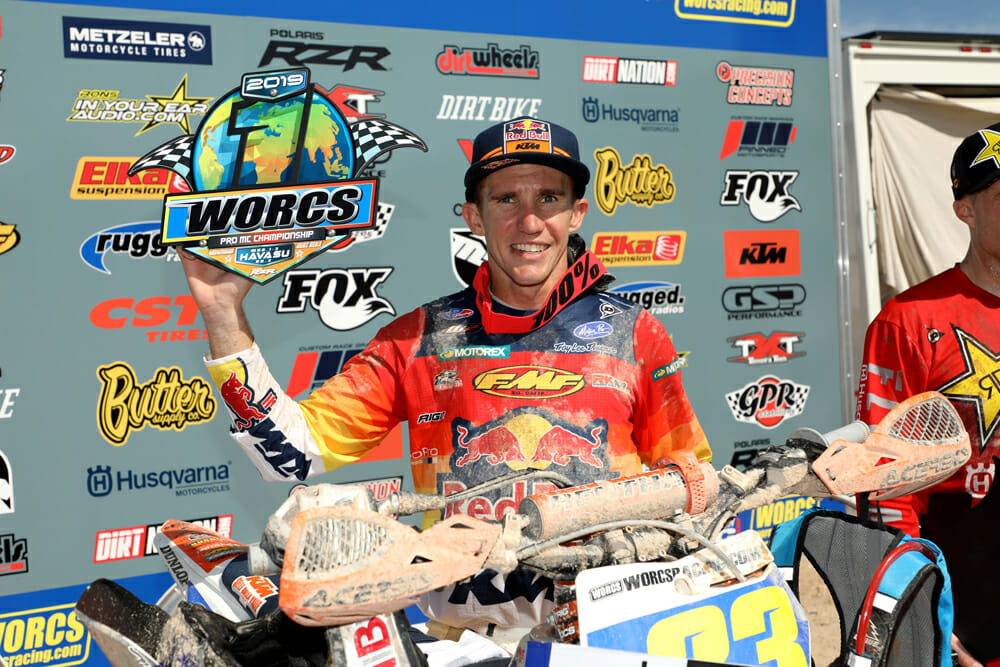 Injuries have slowed Robert’s championship progress but he avoided that in 2019 and came away with the title.
Injuries have slowed Robert’s championship progress but he avoided that in 2019 and came away with the title.
Looking back on 2019, you chased both the WORCS and Sprint Hero series. How much of your focus can you devote to each one?
They’re pretty similar as far as the locations, and since the first time I did ISDE back in 2010, I’ve always been a big believer in sprint speed, whether it’s for [a two-hour] WORCS race or one-lap sprint enduros. That’s always been a big focus of mine, just trying to work on that speed. As long as you’re spending a lot of time on the bike, the fitness will be there. For me, they kind of go hand in hand; I don’t necessarily focus on one more than the other.
Were you surprised you had so much success? You won seven of the 11 WORCS races including the first six in a row, plus four of the five Sprint Hero races.
Not really because I’ve done that in the year’s past. Even though I’ve gotten hurt, I think in 2017 I won every single race that I competed in, but they weren’t all in a row, because I had an injury in the middle, and the same in 2018—I think I won all of them except for the last race. So, I knew it was something I could do. It was just a matter of keeping it together all year long.
Halfway through the year then, were you more nervous or less nervous about staying on top of the points?
As the year went along, I would say that I started to get more nervous, but mostly because of the bad luck I’d had the last couple years. I was so freaked out that something would happen right before the last couple races, so I was real nervous about that. The race that I clinched the WORCS championship, I was even freaked out a lap in, because Zach Bell actually hit me super-hard and I thought I’d broken my elbow! I was like, “Really? This is going to happen to me on the day that I could potentially win a championship?” But long story short, it was okay—I just got a pretty bad hematoma, but I was able to keep it together, but it was one of those things where your heart just sinks for a second and you’re trying to figure out how you’re going to make it happen.
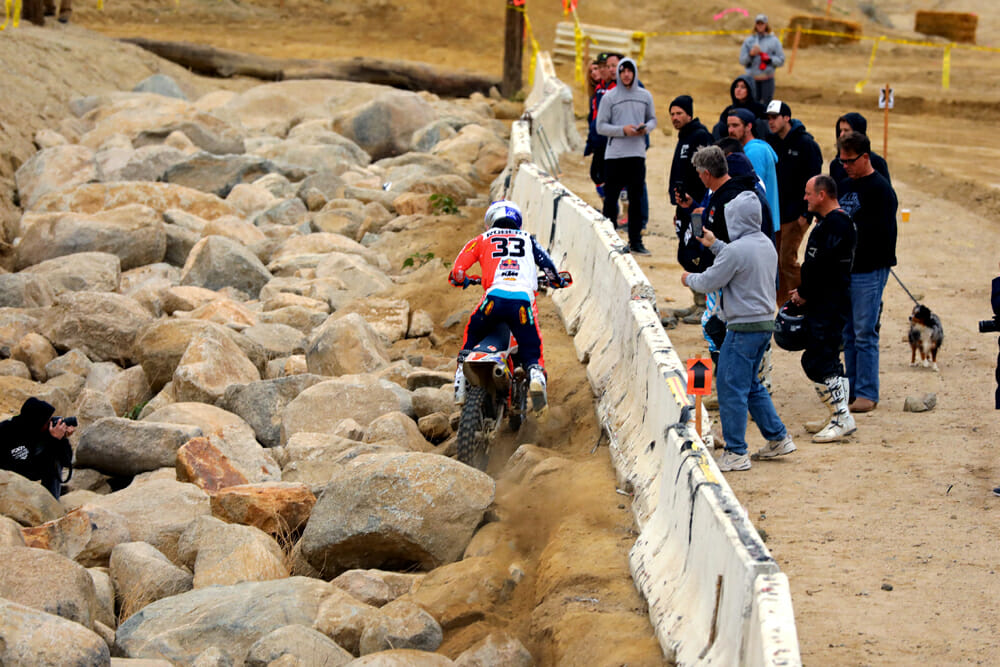 Robert enjoys technical riding. You’ll see more of him in EnduroCross in 2020.
Robert enjoys technical riding. You’ll see more of him in EnduroCross in 2020.
Who or what has been most influential in your career so far?
I would say what being most influential was just going to ISDE in 2010. It was the first time I’d ever raced any of those Europeans and just seeing how fast and smooth those guys are, especially the French riders. I remember watching Johnny Aubert that year and being blown away at how fast he was going and how smooth he was. So that was very influential in my riding style and wanting to be able to be successful at ISDE. There have been a handful of guys here in the United States that I’ve looked up to and trained with and have got a lot of advice from over the years; those guys would definitely be Steve Hatch, Destry Abbott and Kurt Caselli.
KTM has a presence in many different arenas and that’s something that made it possible for Kailub Russell to try some motocross Nationals a couple years ago. Given your background, would you want to try qualifying for a National MX?
I think so. I still have a big passion for motocross, but at the same time, the struggles I’ve had the last few years, getting hurt and whatnot, I kind of got to the point where I was like, “Okay, just focus on the two series that I’m getting paid to do” and try not to get myself hurt doing something I didn’t necessarily need to be doing. I think I’m going to try to do that another year. My KTM contract will be up the end of next year, so, hopefully, sign again with them then assess what races I want to do with my career at that point.
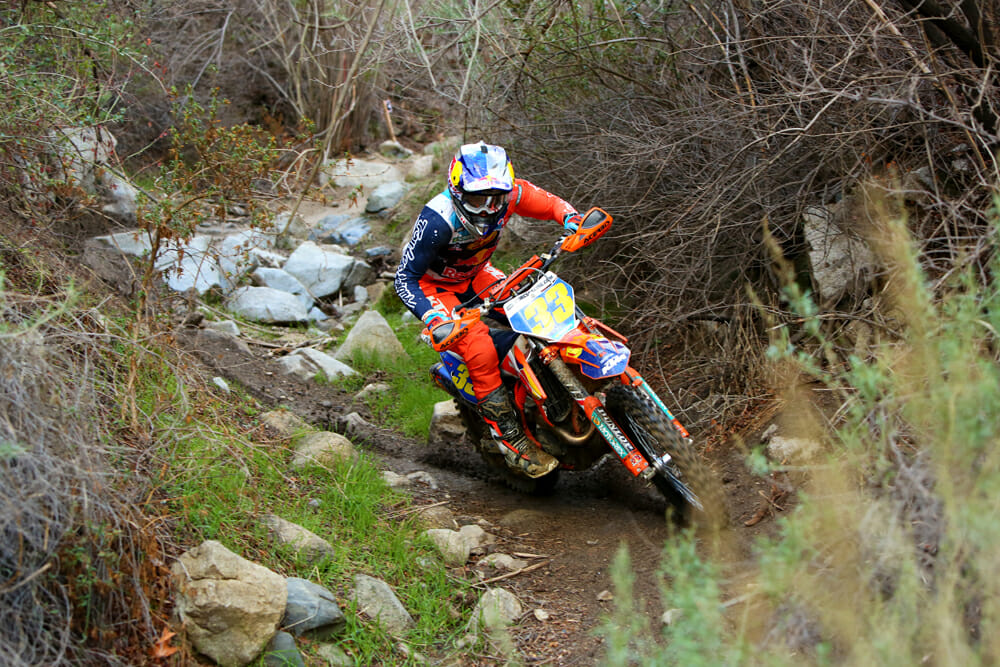 Robert chalked up another title in the young Sprint Hero Championship.
Robert chalked up another title in the young Sprint Hero Championship.
How about Six Days? Is that something that you want to continue doing?
Definitely! I really enjoy Six Days. Like we were talking about, one of the people who influenced me was Kurt—he always pushed really hard to make a good Six Days effort so I’d love to keep that effort going and try to keep the guys together and healthy and motivated. So yeah, I would love to keep doing it and keep trying to win that World Trophy. It’s such an awesome experience. I’ve been fortunate enough to be part of both winning teams. Both times, it was just unbelievable and I’d love to keep being a part of that.
You could be considered the senior member of the Trophy team. You’ve been to Six Days quite a bit now and you’ve done really well just about every year. Are you regarded by team manager Antti Kallonen the team captain, or is there a captain or leader of the team?
I think he kind of considers me the team captain. It’s not official; it’s not like I wear a patch or anything that says captain, but I’ve kind of taken the role and responsibility of trying to keep everybody focused and the logistics of getting everybody around during the week, walking the tests and whatnot. More or less, it’s really just keeping the guys under control and making sure they walk all the tests and everything like that.
That’s no easy task getting that many guys—racers especially—to go on a forced hike in the woods, even though it’s probably going to pay off come race time.
It’s definitely tricky, especially when you have four guys—and it’s really seven guys because the Junior [World Trophy] guys are always with us as well [and] we have to keep track of the [three Women’s World Trophy riders] as well. The tricky part is trying to keep seven guys together when you’ve got seven different personalities and seven different series as far as training and what works for them and what doesn’t. So it’s pretty tricky, trying to make it fun without losing focus as well.
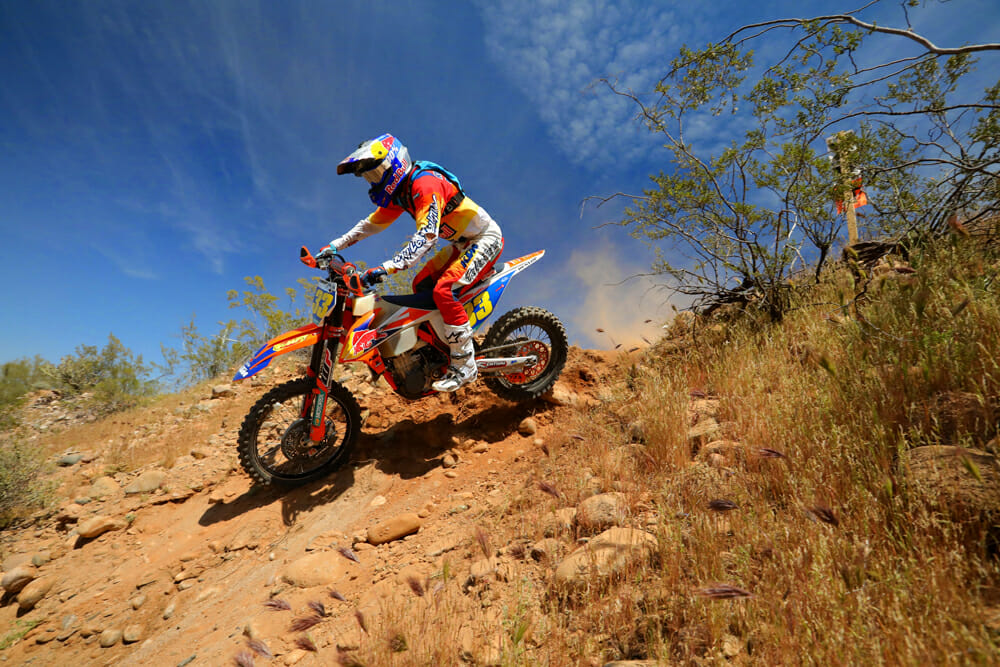 In 2020, Robert will turn 30, but he shows no signs of slowing down.
In 2020, Robert will turn 30, but he shows no signs of slowing down.
In Portugal, did it surprise you to start out so strong yet Daniel Sanders from Australia was killing it and leading overall to keep their team right with the American squad in the team standings for the first few days?
That was tricky because we knew we had three guys in the top five [overall], yet we weren’t winning. So that was a little frustrating, but I had a really good feeling that if we kept our program together and we kept riding like that, it would work itself out. If you have four guys riding that well for that many days in a row, chances are that one guy isn’t going to be able to carry three other guys for six days. Not to take anything away from Sanders who was riding really well, but at the same time I had a feeling that if we kept on top of them, that we’d be able to make it happen.
Have you ridden in the E1 class (125cc two-strokes and 250cc four-strokes) before? And what’s your preference?
I have not; I’ve always been on either a 450, 500 or a 350. Honestly, I tried riding the 250 a little bit this year for training, and you just have to ride it so much differently than the 450. For me, I feel like my riding style really suits the 450 as far as trying to be smooth and not over-riding the bike. That’s what I was struggling with when I was trying to ride the 250, was just how aggressive you have to ride a 250 to go the same speed as someone on a 450 or myself on a 450, for that matter.
Looking back at 2019, which is your favorite moment: winning the Sprint Hero Championship, the WORCS championship or the Six Days?
I think my favorite moment would be winning Six Days. It was just such a cool feeling, and having that many fans there and that much American pride going around, I thought that was a really cool experience. CN
